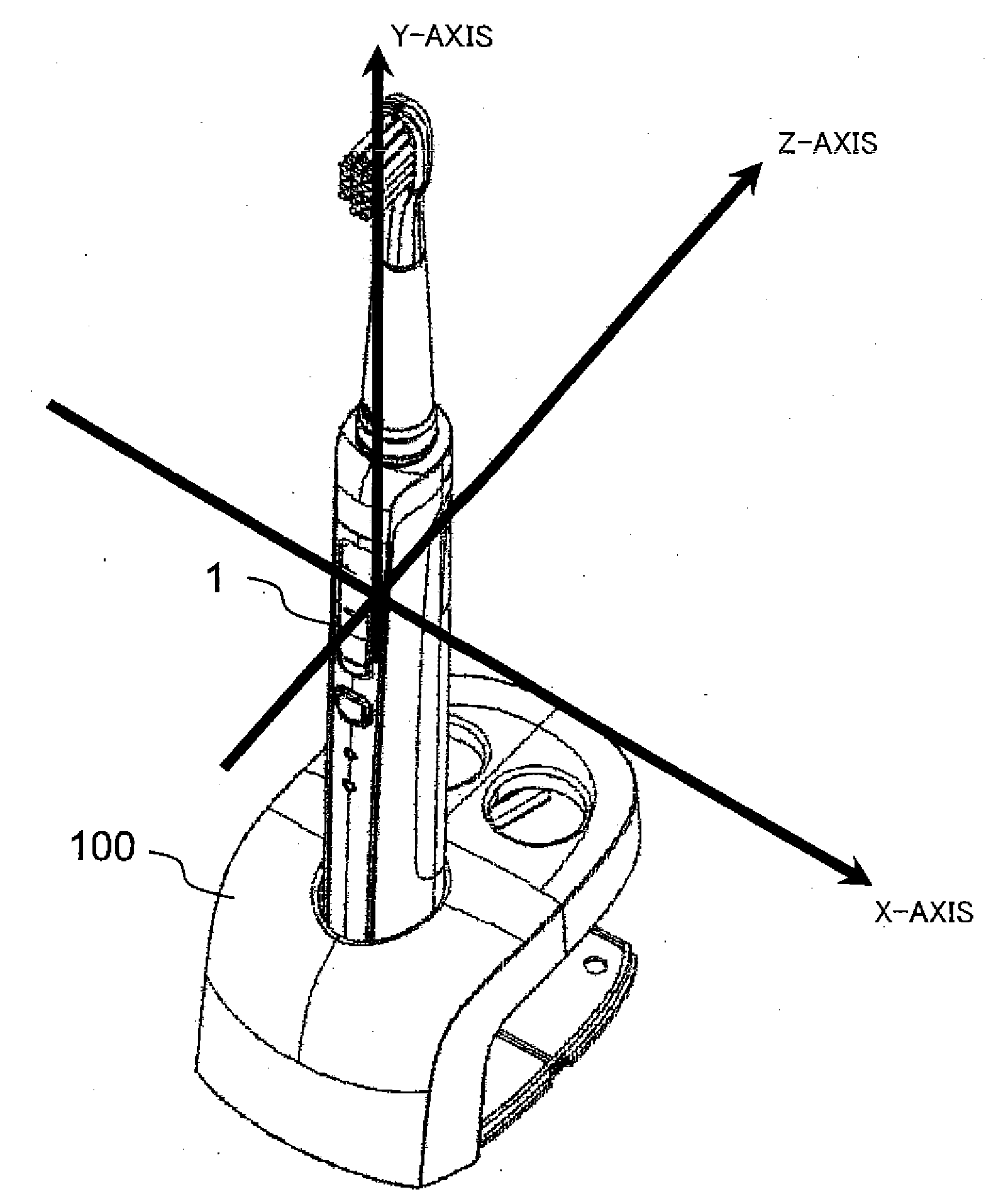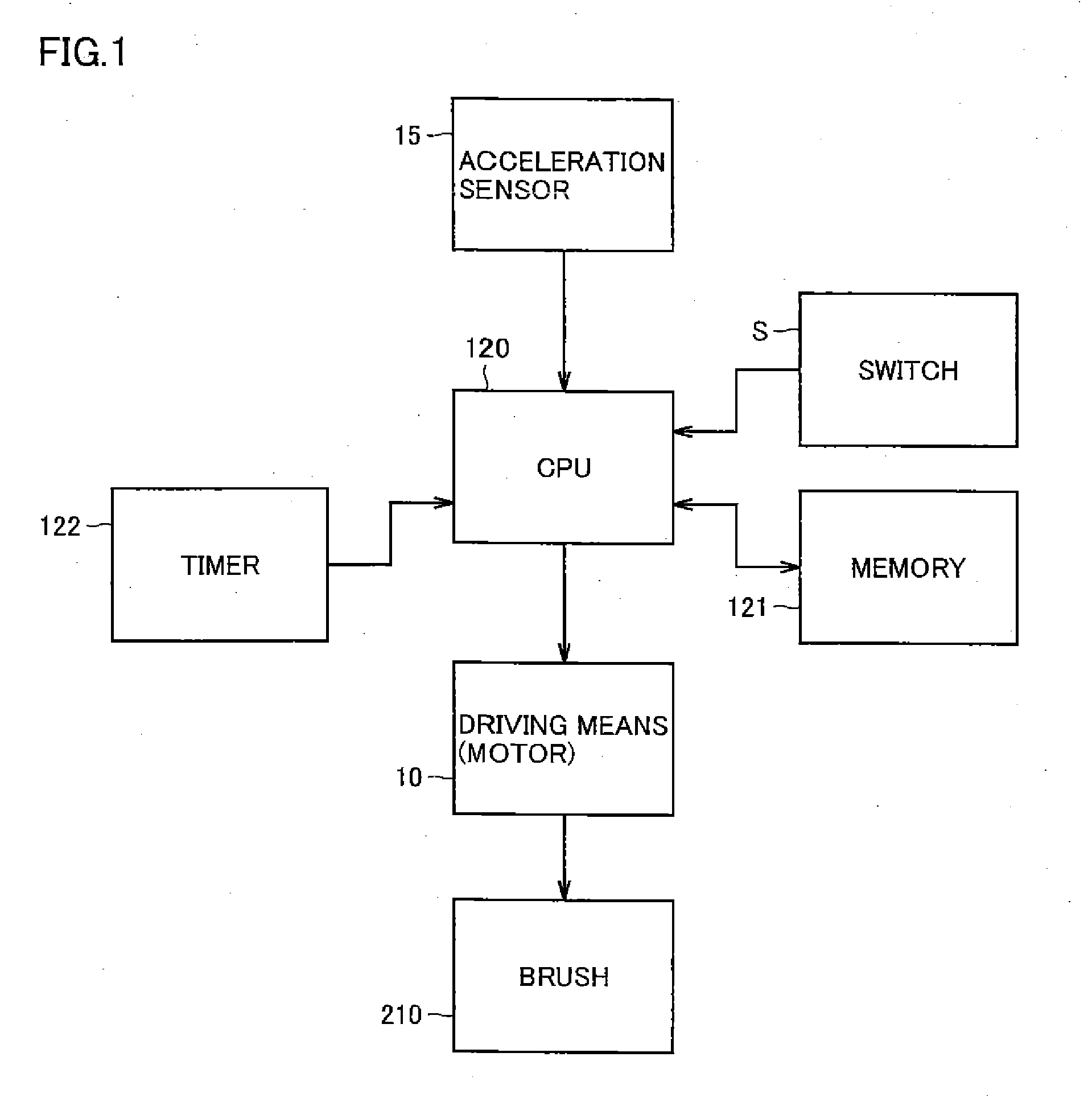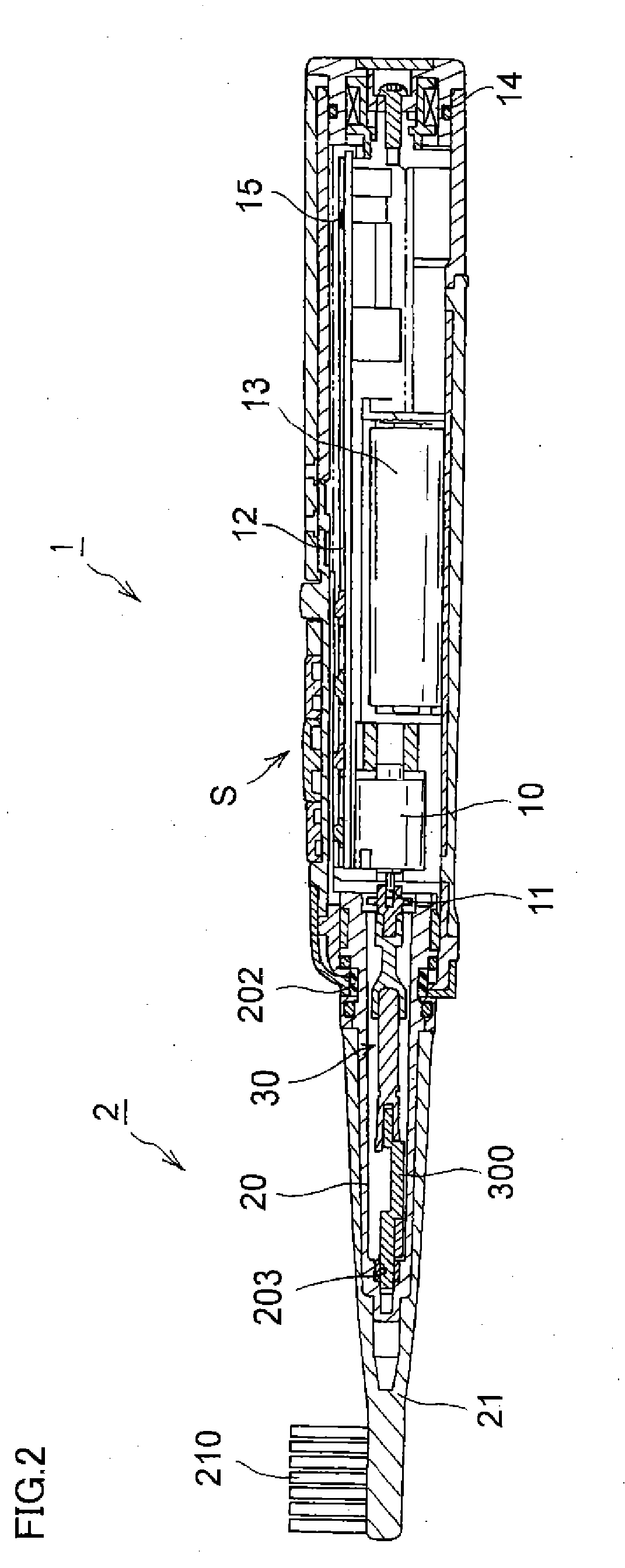Electric toothbrush
a toothbrush and electric technology, applied in the field of electric toothbrushes, can solve the problems of difficult to reduce the size of such a mechanism and difficult to obtain high sensing accuracy, and achieve the effect of improving the power of plaque removal and improving the sense of medical treatmen
- Summary
- Abstract
- Description
- Claims
- Application Information
AI Technical Summary
Benefits of technology
Problems solved by technology
Method used
Image
Examples
first embodiment
Structure of Electric Toothbrush
[0057]Referring to FIG. 1, FIG. 2, and FIG. 3, a structure of an electric toothbrush will be described. FIG. 1 is a block diagram of an electric toothbrush in a first embodiment, FIG. 2 is a cross-sectional view showing an internal structure of the electric toothbrush in the first embodiment, and FIG. 3 is a perspective view showing an external view of the electric toothbrush.
[0058]The electric toothbrush includes an electric toothbrush body 1 (hereinafter simply referred to as “body 1”) containing a motor 10 serving as a driving source, and a vibrating member 2 having a brush 210. Body 1 has a generally cylindrical shape and also serves as a handle portion for the user to grip by hand in brushing his / her teeth.
[0059]Body 1 is provided with a switch S for turning on / off the power. Provided in the inside of body 1 are motor 10 serving as a driving source, a driving circuit 12, a rechargeable battery 13 serving as a power supply of 2.4 V, a coil 14 for ...
second embodiment
[0099]The electric toothbrush in a second embodiment of the present invention will now be described. In the first embodiment, the rotational direction of the motor is controlled depending on a section being brushed. In the second embodiment, the frequency (motion frequency, specifically, a rotational speed of the motor) of the brush is controlled depending on a section being brushed. The other structure is similar to that of the first embodiment and therefore a structure specific to the present embodiment will mainly be described below.
[0100]FIG. 13 is a flowchart of an operation mode switching process (S30 in FIG. 5) in the second embodiment. CPU 120 checks whether the section being brushed is changed or not by comparing the section being brushed specified in S20 with the section being brushed in the previous process (the process one clock earlier) (S900). It is noted that the section being brushed in the previous process is stored in the memory.
[0101]If the section being brushed i...
third embodiment
[0106]The electric toothbrush in a third embodiment of the present invention will now be described. In the present embodiment, CPU 120 estimates a brush angle based on the orientation of the brush and switches operation mode in accordance with the section being brushed and the brush angle. The other structure is similar to that of the forgoing embodiments and therefore a structure specific to the present embodiment will mainly be described below.
[0107]
[0108]In this electric toothbrush, the turning motion of the eccentric shaft is utilized to generate vibration of the brush. The brush vibrates along an elliptical trajectory in the plane vertical to the rotation shaft of the motor. The present inventors have observed and analyzed vibration of the brush with various frequencies (motor rotational speeds) and found that this electric toothbrush has the following vibration characteristics.
[0109](1) The brush portion has at least two resonance points (resonance frequencies).
[0110](2) The r...
PUM
 Login to View More
Login to View More Abstract
Description
Claims
Application Information
 Login to View More
Login to View More - Generate Ideas
- Intellectual Property
- Life Sciences
- Materials
- Tech Scout
- Unparalleled Data Quality
- Higher Quality Content
- 60% Fewer Hallucinations
Browse by: Latest US Patents, China's latest patents, Technical Efficacy Thesaurus, Application Domain, Technology Topic, Popular Technical Reports.
© 2025 PatSnap. All rights reserved.Legal|Privacy policy|Modern Slavery Act Transparency Statement|Sitemap|About US| Contact US: help@patsnap.com



